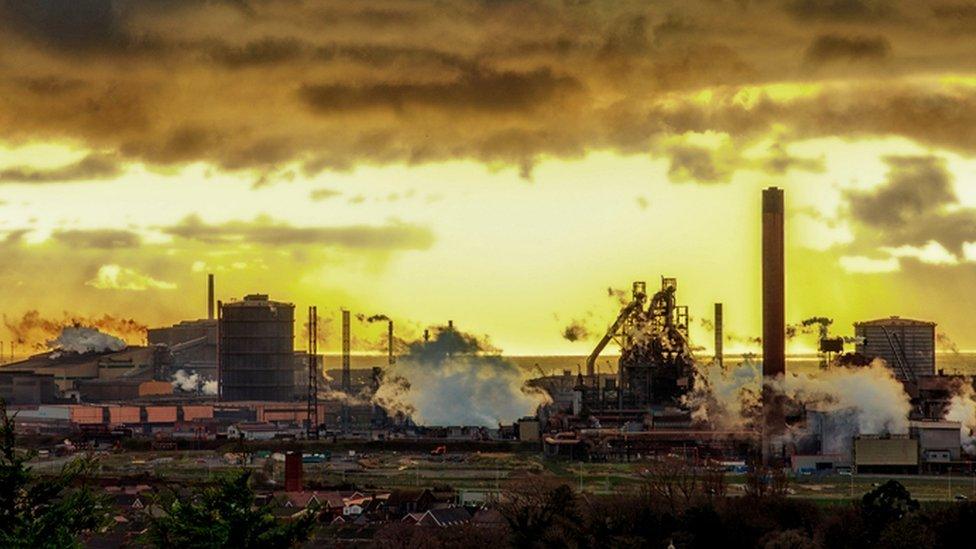Tata steel: Port Talbot artists inspired by landmark
- Published

Roo Lewis' photographs capture different people from the town and their connection to the steel works
"We like that people don't see the beauty of it, it's ours."
Jackson Lucitt is "Port Talbot born and bred" and that's how he describes the town's steelworks.
It's economic importance has made headlines for months, as workers wait on news of its uncertain future.
But the plant is also one of Wales' most striking and familiar landmarks, with its blast furnaces rising into the skyline as passers-by head west on the M4.
That sight has inspired many artists from the town and beyond - including Banksy who left his mark on the side of a garage in Taibach back in 2018.
However, on Thursday, it emerged that the plant's owner Tata Steel is to push ahead with plans to close both blast furnaces at the site, which could lead to 3,000 job losses.

A striking image of the steelworks bathed in blue hues
'Port Talbot steelworks looks biblical'
"It's been a backdrop to most our lives and our best memories, it's just always been there," said Jackson.
"At night-time when it's all lit up, it looks biblical, like something out of Lord of the Rings. The connection is there, it has a place in all of us."
This week, the community heard that 3,000 jobs at the site will go as its blast furnaces close as part of a decarbonisation process to significantly reduce the site's massive carbon footprint.
The singer-songwriter detailed life in the town in his song Save our Steel, written in the months of uncertainty which hung over Port Talbot, with shops opening here at 5am for the shift change.
"These businesses are built on the traffic and the footfall of the employees and our family members at the steelworks," he added.
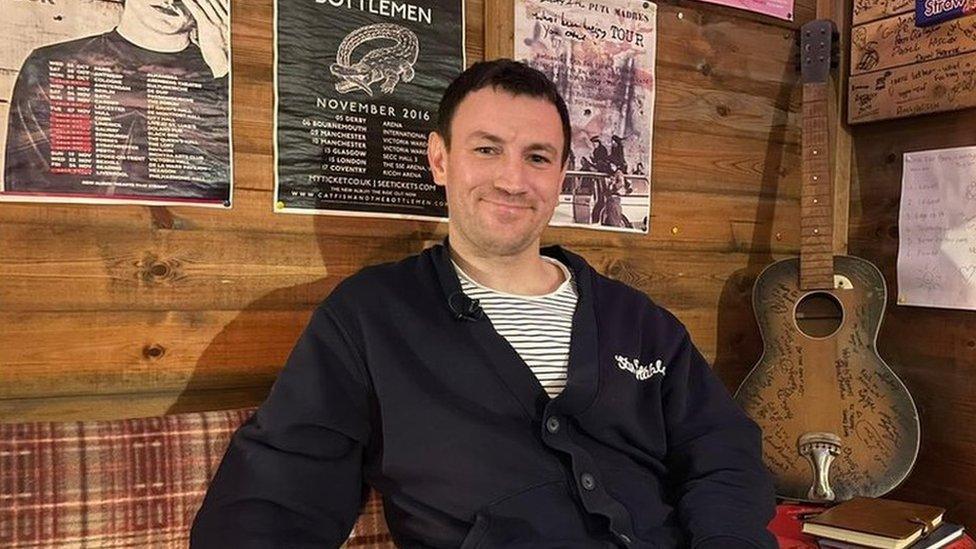
Jackson Lucitt says the steelworks is important to so many local businesses
The walls of the 38-year-old's garden bar are adorned with work from local artists, fashion brands and musicians.
"There's so much going on around the town outside of the steel works, but which also takes inspiration from life in Port Talbot, which ultimately involves the steel works as the backdrop," he added.
"I feel like everyone from around here has been taking photos of it at some point in their life, because it's such an amazing thing to look at."
Driving back from university, Ffion Lloyd-Jones, 24, said she knew she was "home" at the first glimpse of the steelworks from the motorway.
So, it was no surprise that her final year university photography project would feature the plant.
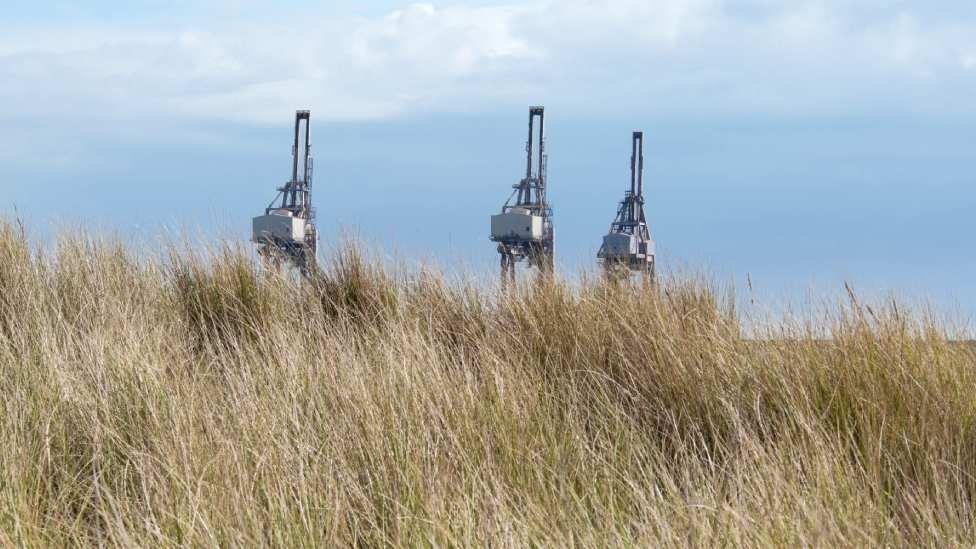
Ffion Lloyd-Jones' project focuses of different views of the steelworks from around Port Talbot
'It blends with the landscape'
"I just wanted to do something different, because everyone has seen photos of the steelworks, so I wanted to show that it does just blend in with the landscape," she added.
Her photographs show small glimpses of the chimneys and furnaces from all over Port Talbot, sticking out of rooftops and blending into the backdrop of the town's streets.
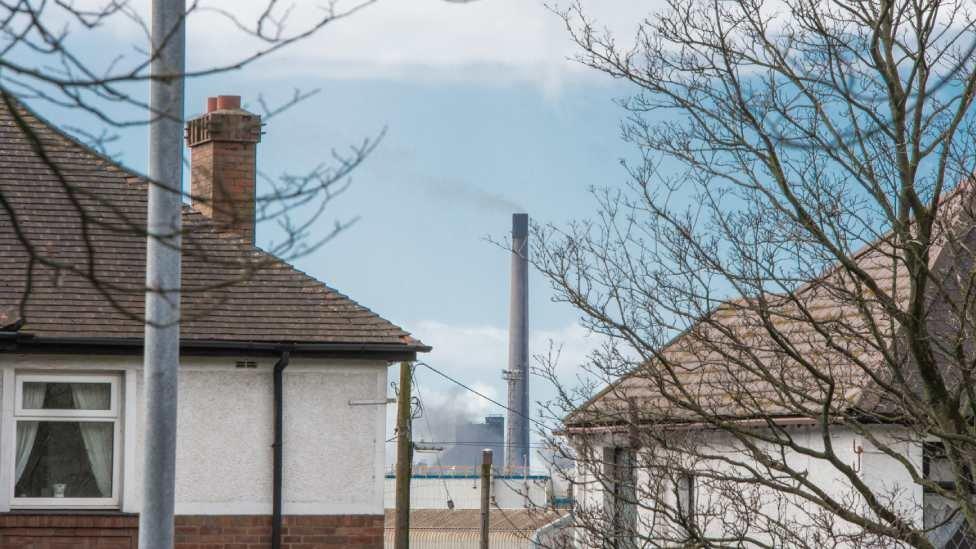
Ffion Lloyd-Jones' photographs show glimpses of the steelworks' chimneys and furnaces from all over Port Talbot

Ffion Lloyd-Jones says she is interested in how the plant blends with the landscape
Stood on Aberavon beach with the works behind her, the photographer said she wanted to romanticise the vast industrial landscape, which she believes has become so normal, it almost goes unnoticed.
"I think a lot of people look at it and they see the pollution and they do look at it as a negative thing and I think it has affected the reputation of Port Talbot, but I do think if you've come here and you meet the people, it's just not like that. It is a nice area, a nice community here," she added.
'Port Talbot is dreamland'
"I see Port Talbot as a dreamland, I really do, people think I'm joking but there's no other place like this," said Roo Lewis.
The photographer's earliest memories of the steelworks are pressing his nose up against the car window on the way to visit his granddad in Pembrokeshire.
"He told us it was a space station and there's always that air of mystery about the place and, yes, it's a steelworks, but growing up it was this place of magic and mystery and I know it sounds silly, but it's iconic, everyone knows the Port Talbot skyline," he added.
The fascination never left and earlier this year the 38-year-old published his love letter to the town - Port Talbot UFO Investigation Club.

The steelworks are a constant presence for anyone travelling on the M4 between Bridgend and Swansea

Michael Locke from Dirty Sanchez features in this Port Talbot photograph by Roo Lewis
Sheltering from the rain in Taibach RFC, he recalled watching the furnaces light up the sky one summer evening from his hotel room.
"The sky was lighting up in sort of an orange hue, they also have this blue plankton visit - so you've got the sea glowing blue, you've got the light, the clouds on fire and then mountains and waterfalls and sand dunes and everyone walks around like it's normal," he said.
Taken over two years, the project finally gave the photographer a chance to explore the town, capture its people and landscapes, and make friends he still visits today.
"There's something about it, it's something in the air and I don't think I've worked out what it is yet, but you have to experience it, you have to come here," he added.

Roo Lewis says he has tried to capture the dreamy quality the steelworks bring to the landscape - picturing Gabrielle Jukes with a Miss Wales sash in front of it

THE MINISTRY OF HAPPINESS: The radio station above a flat in Cardiff
60 YEARS OF WELSH POP: Celebrating Welsh music, from the swinging sixties to Cool Cymru

Related topics
- Published19 December 2018

- Published2 November 2023
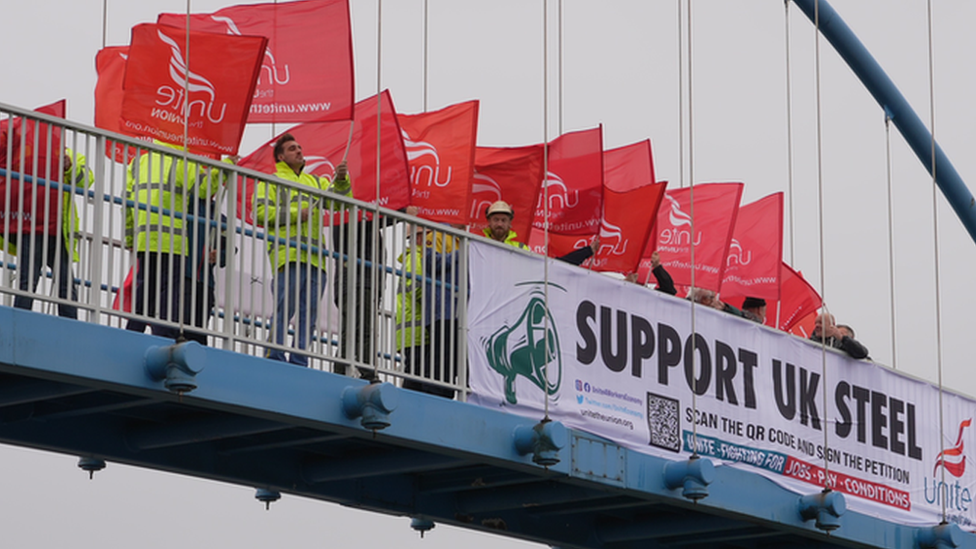
- Published22 July 2022
